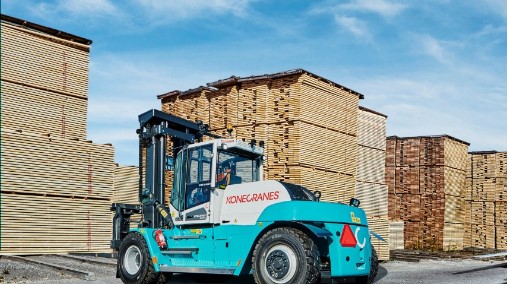In the last few years, there have been significant innovations in electric and battery operated heavy lifting machinery. Long-term cost savings and helping customers reduce their carbon footprint are advantages of Konecranes battery-driven and all-electric heavy lifting machinery.
The first Konecranes product to get a battery was the Konecranes Gottwald Automated Guided Vehicle (AGV). These vehicles are used in automated container terminals to move containers between the Ship-to-Shore (STS) cranes and the container yard. Since the average power requirement is less than that of equipment that also stacks containers, the AGV was an ideal first candidate for electrification.
Recently Konecranes introduced battery-driven operation for its Rubber-Tired Gantry (RTG) crane, which was a world-first. Konecranes also introduced a battery-driven straddle carrier system. An 18-ton, battery-driven forklift truck (the E-VER) is also available, as well as all-electric Generation 6 mobile harbor cranes. In hybrid straddle carrier and hybrid RTG, a smaller diesel genset is used in combination with batteries. This was an important development: hybrid straddle carriers and RTGs are becoming popular thanks to much reduced diesel fuel consumption and tailpipe emissions. Ultimately, the goal is the elimination of tailpipe emissions. The lithium-ion (Li-ion) battery is the innovation that makes this possible.
For more about the advantages of this technology from Konecranes, see the full article on this here


